
Light vs Electron Microscopes YouTube
Greg Foot explains the main differences between light and electron microscopes A replica of Robert Hooke's compound microscope We need microscopes to study most cells. Microscopes are.

What Are The Main Differences Between A Light Microscope And An Electron Microscope
Both electron and light microscopes are technical devices which are used for visualizing structures that are too small to see with the unaided eye, and both types have relevant areas of applications in biology and the materials sciences. And this is pretty much it. The method of visualizing the structures is very different.
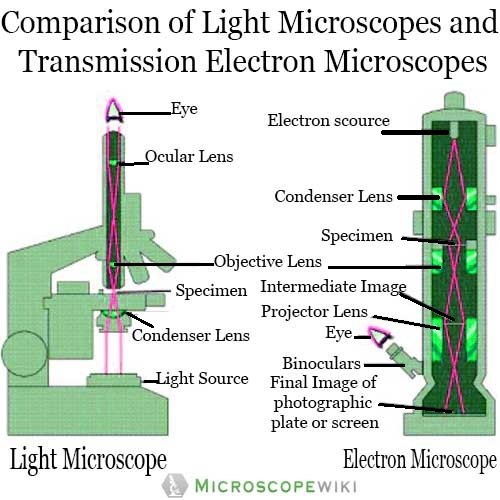
How Are Light Microscopes And Electron Alike Shelly Lighting
A light microscope utilizes a beam of light to observe tiny microorganisms like mitochondria, whereas an electron microscope, such as scanning electron microscope, uses a beam of electrons to enlarge a minuscule specimen. Let's have a brief overview of these microscopes through a comparison chart, and move towards details. Table of Contents

Light microscope vs. Electron microscope
Light microscopes have a resolution of roughly 200 nanometers. Naturally, electron microscopes offer a much higher resolution compared to light microscopes. The resolution of most SEM devices can be approximately 100 times greater than that of an optical variant, translating to 0.2 nm.
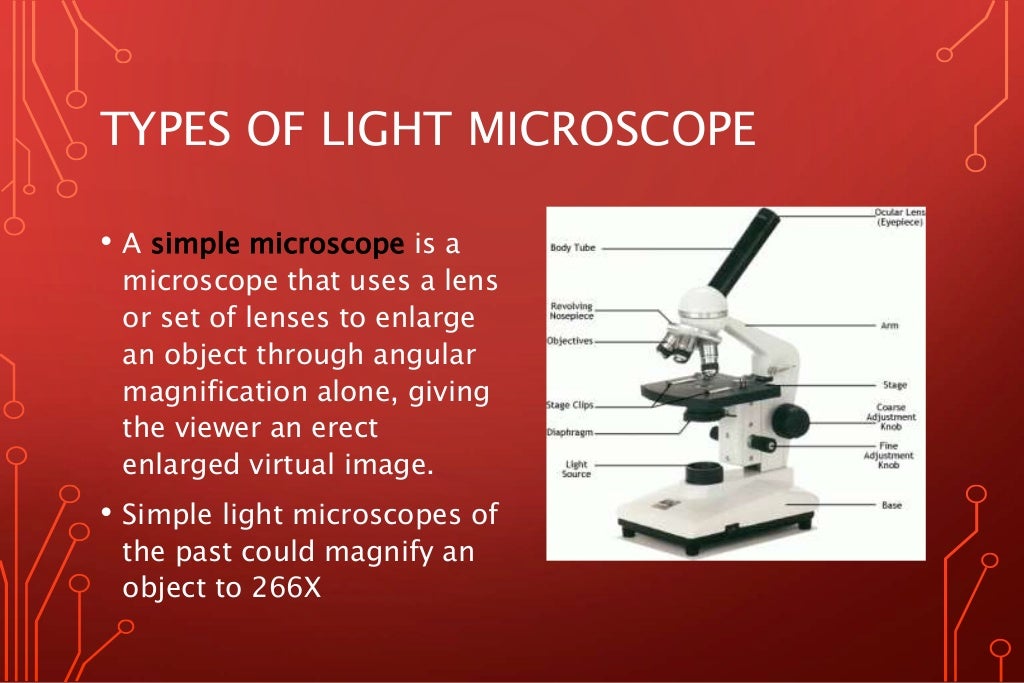
Light microscope vs. Electron microscope
Differences: Size: Light microscopes are smaller and lighter, so are easier to move and set-up. Cost / Availability: Light microscopes are less expensive than electron microscopes. Radiation Type: Light microscopes use light (approx wavelength 400-700 nm), electron microscopes use beams of electrons (approx equivalent wavelength 1 nm).
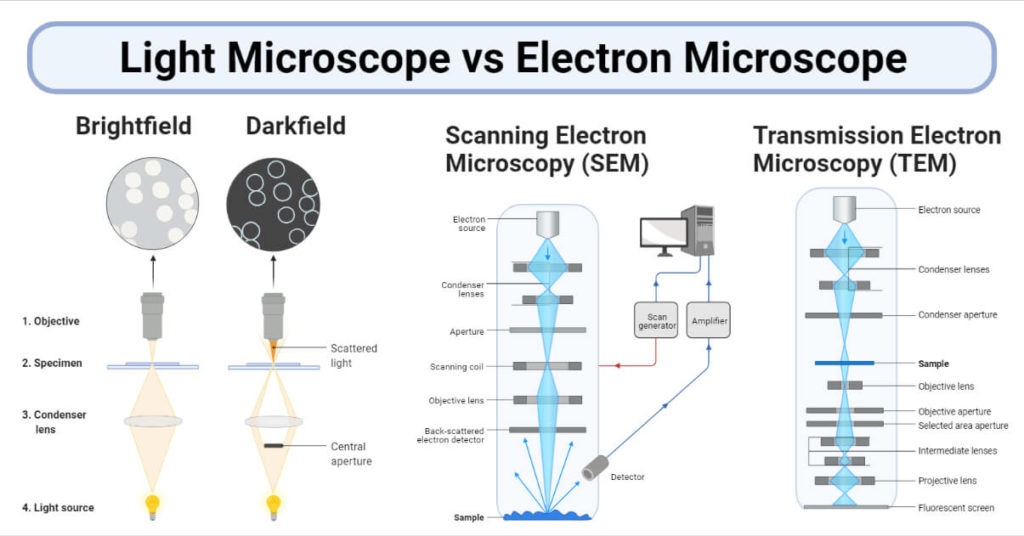
Light Microscope vs Electron Microscope 36 Major Differences
The main difference between them is that in an electron microscope, a beam of electrons is used for magnifying the image of an object while visible light is used in the light microscope to magnify images of tiny areas of materials or biological specimens.
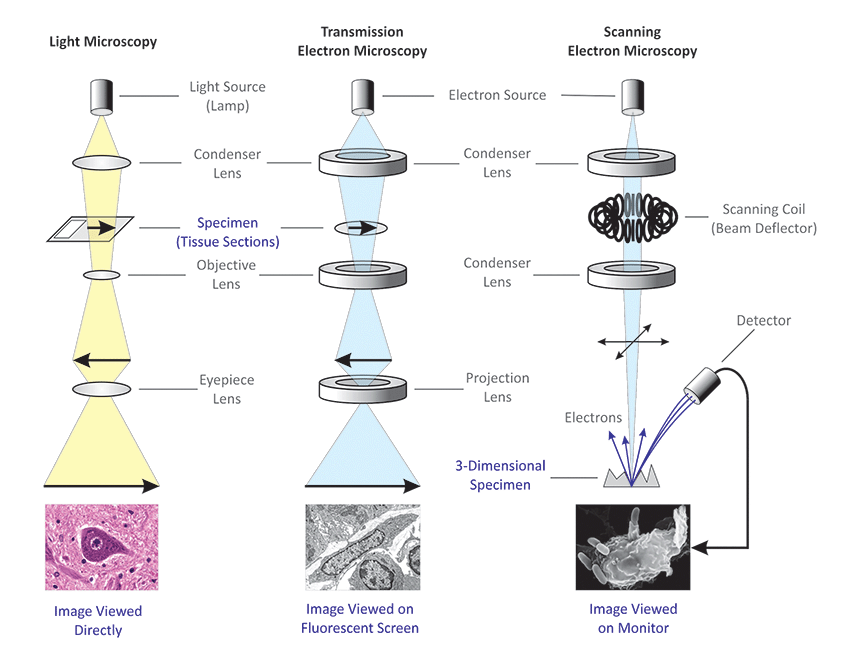
Differences between Light Microscope and Electron Microscope
The key difference between light and electron microscope is that a beam of electrons is employed for magnifying the image of an object while visible light is used in the light microscope to magnify images of spotted areas of materials or biological specimens.
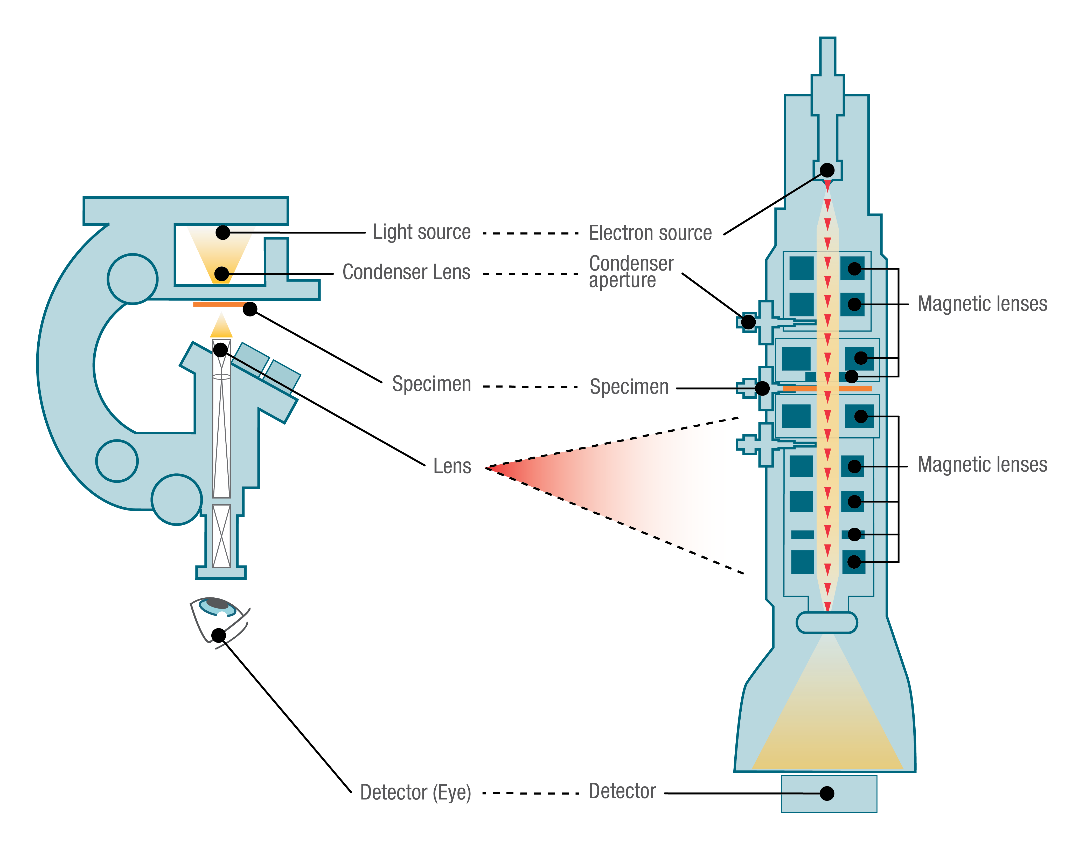
Light Microscope vs Electron Microscope Life in Atomic Resolution
In actuality there are two main types, namely the light microscope vs electron microscope. Most likely you are familiar with a light microscope. This version sits on a desk, uses light and a lens to magnify your objects, and is often found in science classes around the world.
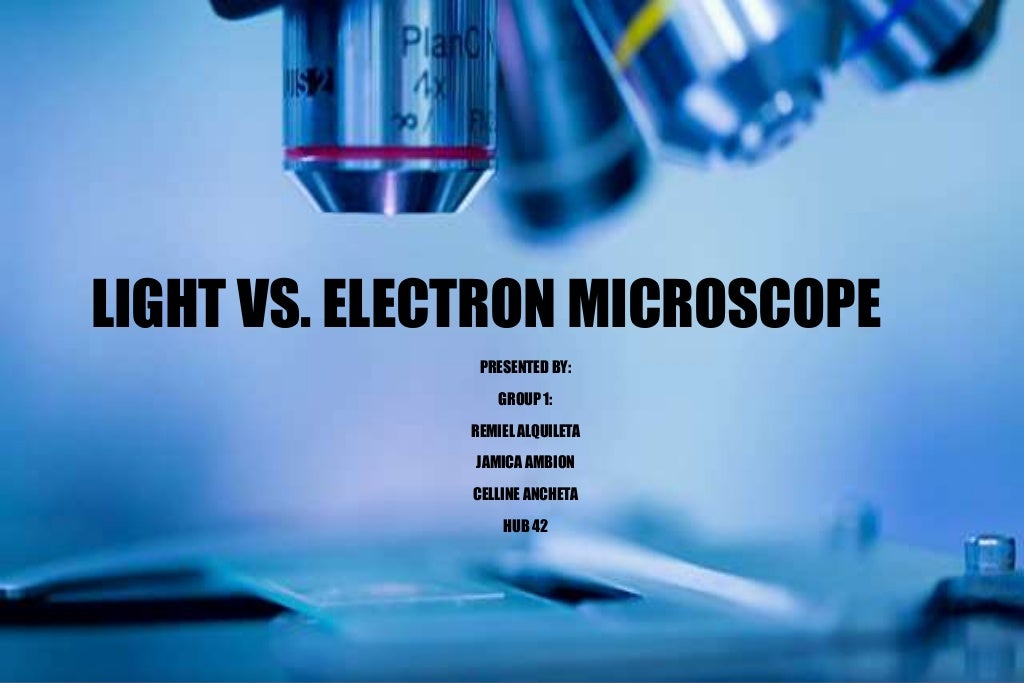
Light microscope vs. Electron microscope
One of the characteristic difference is that a light microscope uses a light source, whereas an electron microscope uses a beam of an electron. The light microscope shows low magnifying and resolving power of 1000X and 0.2µm, respectively. In contrast, an e - microscope shows high magnifying and resolving power of 10, 00,000X and 0.001µm.
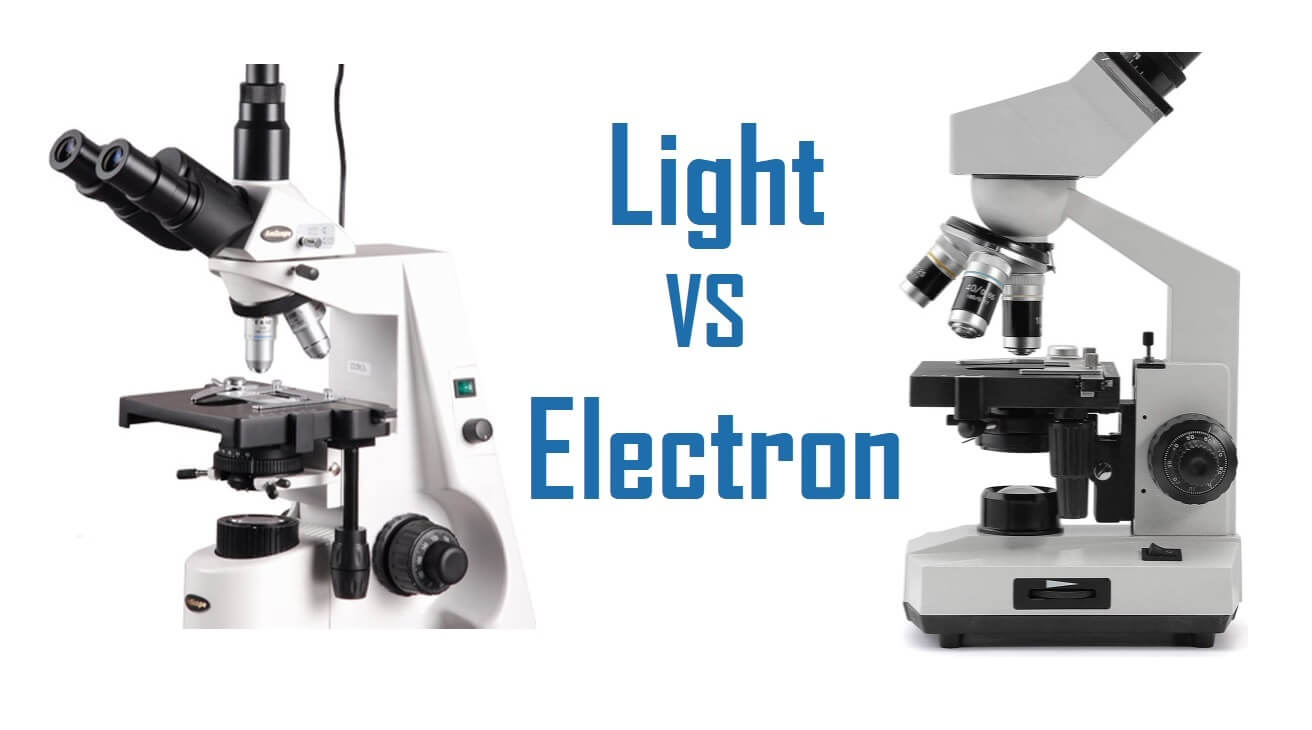
Difference between Light and Electron Microscope Microscope Crew
The main difference between light and electron microscopes is the radiation used to form an image; the 'light' and 'electron' in the names refer to the radiation being used. Using visible light as a radiation has several limitations, which the electron microscope lessens. However, light microscopes are much more practical in general use.
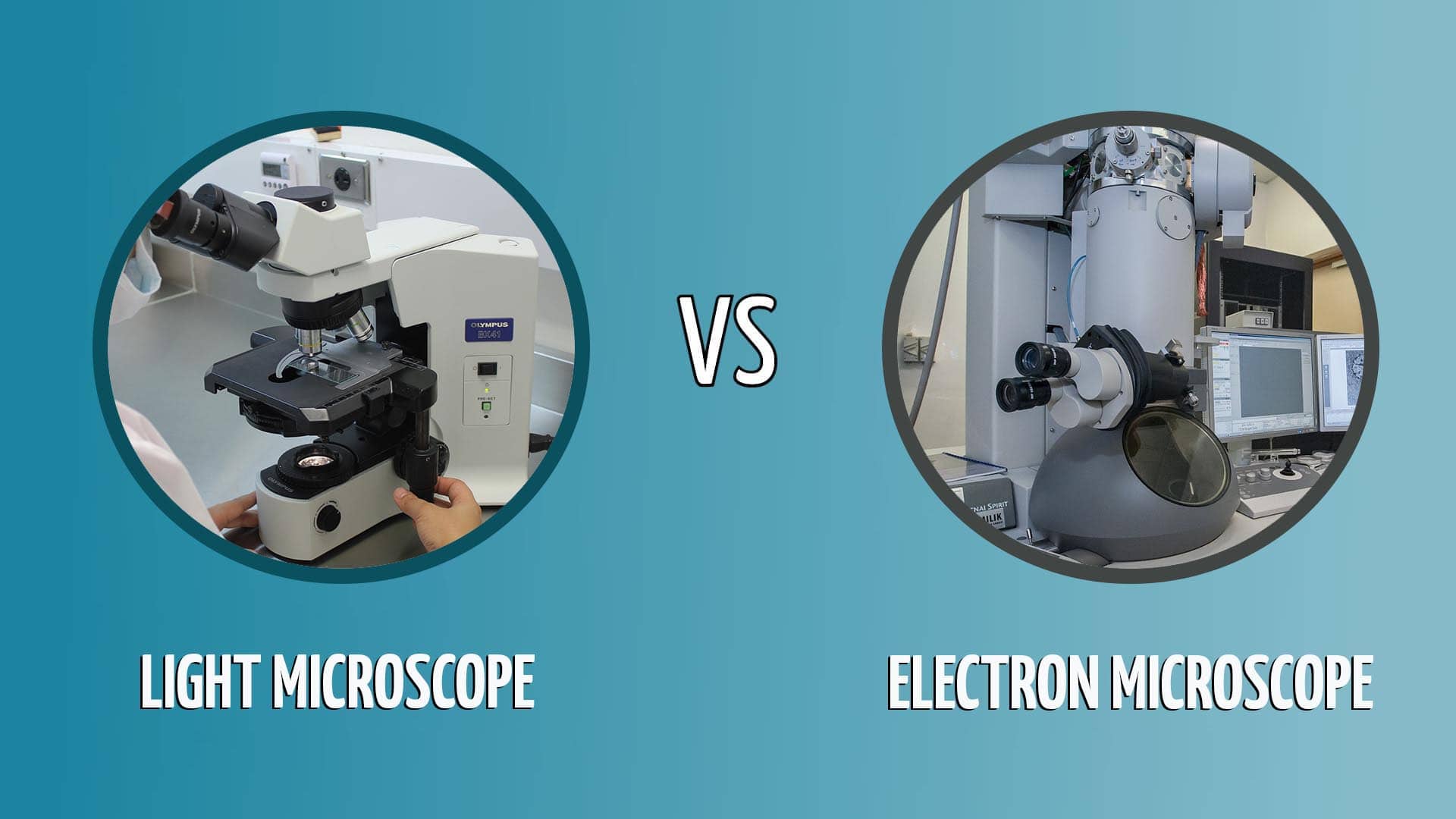
Light vs Electron Microscope What's the Difference? (With Pictures) Optics Mag
Microscopy Introduction to microscopes and how they work. Covers brightfield microscopy, fluorescence microscopy, and electron microscopy. Introduction If you meet some cell biologists and get them talking about what they enjoy most in their work, you may find it comes down to one thing: secretly, they're all microscope freaks.

😍 Compound light microscope vs electron microscope. The Comparison of a Light Microscope to an
Light Microscope vs Electron Microscope- 36 Major Differences April 2, 2022 by Sagar Aryal Edited By: Sagar Aryal Both light microscopes and electron microscopes use radiation (light or electron beams) to form larger and more detailed images of objects which cannot be seen clearly through an unaided eye. Light Microscope vs Electron Microscope
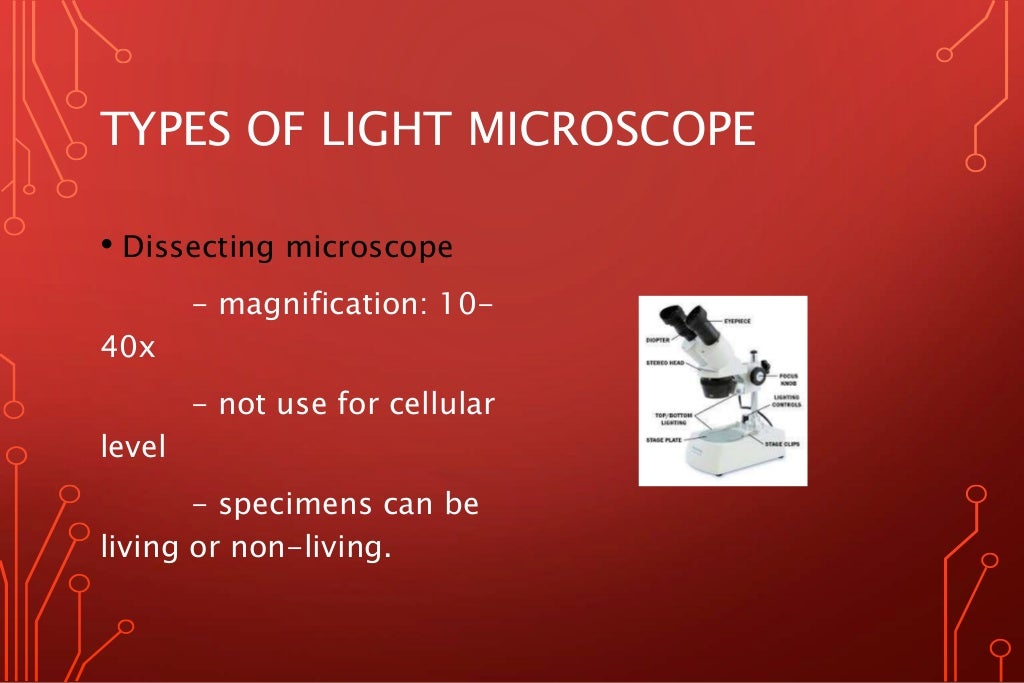
Light microscope vs. Electron microscope
Light vs Electron Microscope: What's the Difference? (With Pictures) Last Updated on Jul 23 2023 When you need to see the smallest of subjects in great detail, you turn to the microscope. But there are multiple types of microscopes and they're each suited for different viewing purposes.
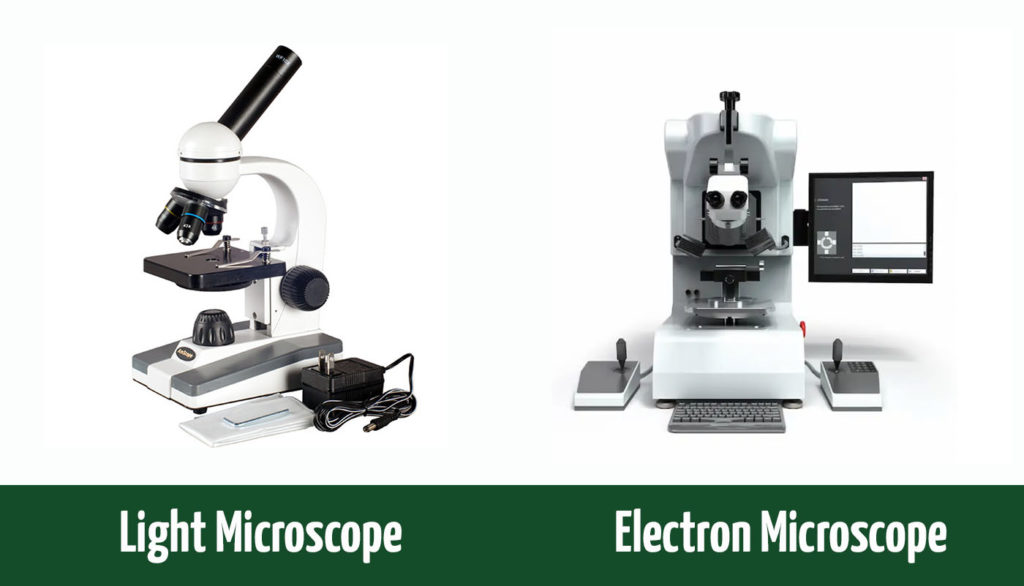
Light vs Electron Microscope What's the Difference? (With Pictures) Optics Mag
Light Microscopes vs. Electron Microscopes. Most microscopes used in college biology laboratories are classified as light microscopes (see the figure, part (a) below) and may also be called compound microscopes since they use two lenses whose magnifications compound (multiply). Visible light passes through the specimen and is bent through the.
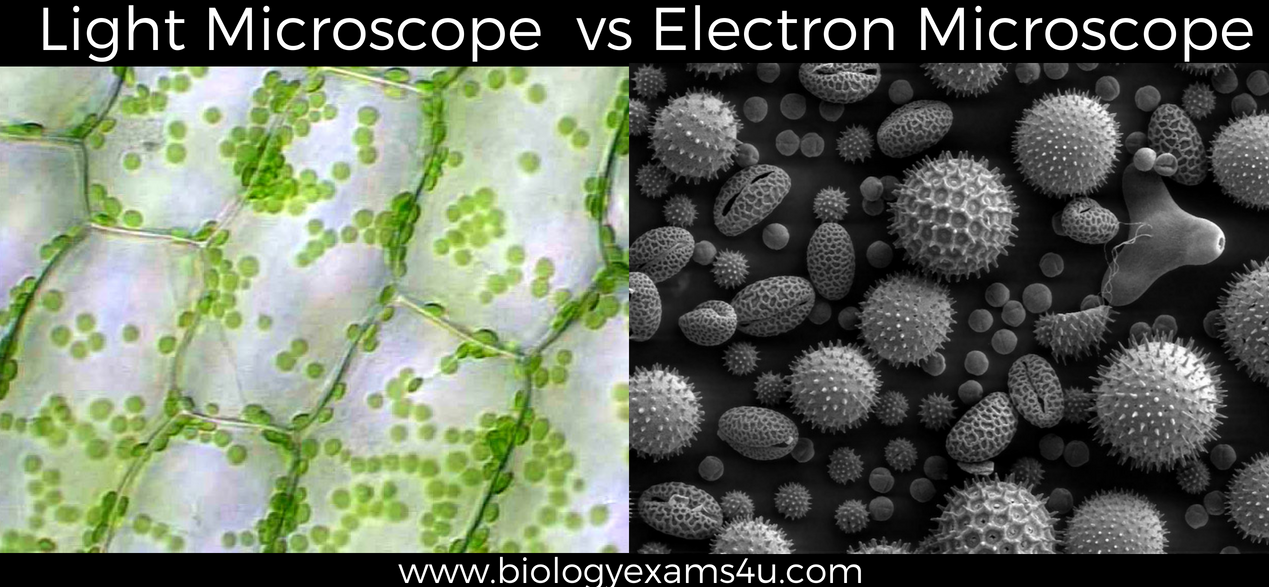
Difference between Light Microscope and Electron Microscope (Light Microscope vs Electron
Sumera Saeed. Oct 09, 2023. 15. The electron microscope, being more technologically advanced, requires a specialized environment to function optimally, including vibration-free platforms and sometimes even vacuum conditions. In stark contrast, the light microscope is much more tolerant of its surroundings and can be used in various environments.

What Are The Differences Between Light Microscopes And Electron Quizlet
Light microscopes are easy to operate, while electron microscopes show hidden features and have superior resolution. Budget, sample size, and detail level determine which equipment is best for a scientific inquiry. New imaging methods and hybrid systems may help us discover the invisible world as technology advances.